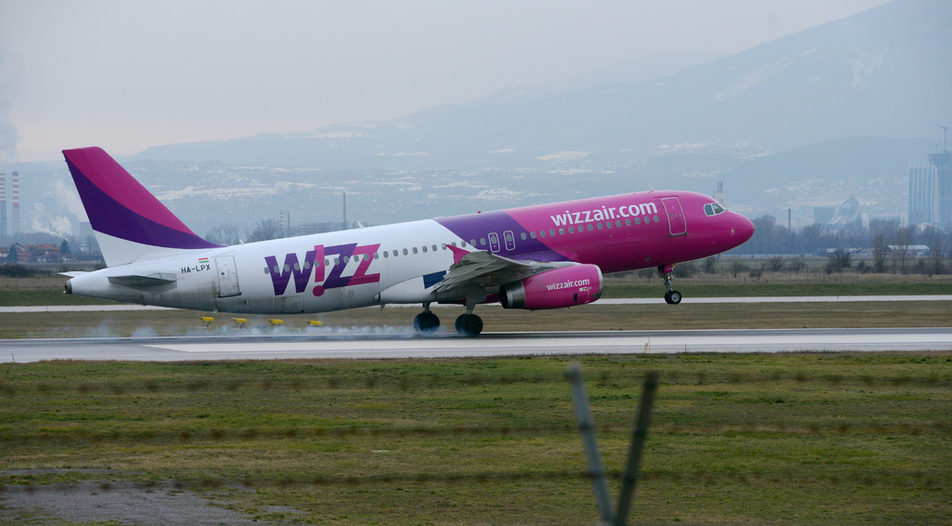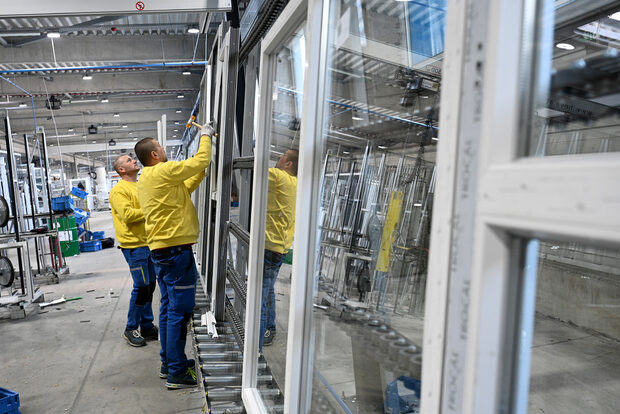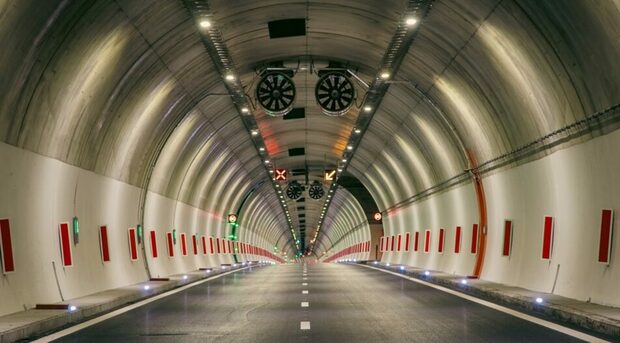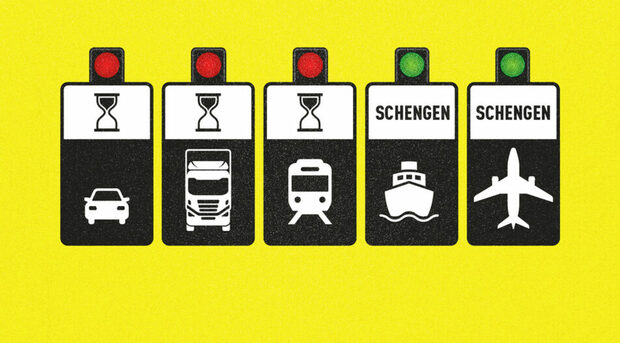For the most part, the transition economies of Central and Eastern Europe (CEE) and the former Soviet Union have seen impressive growth and broad economic progress in the three decades since the fall of the Berlin Wall. Poland's GDP per capita has grown nine-fold, and Poland was one of only three countries in the world, with China and Australia, to avoid a recession from 1992 to 2019. The Prague region has become the 6th richest per capita in the EU, well ahead of Paris, Stockholm or Stuttgart.
During the first three decades of transition, recipes for economic success leveraged the region's favorable mix of cost advantages and technical skills. However, with a declining and more expensive workforce, with many jobs impacted by the greening and digitalization trends, the region is at a defining moment.
If it is to avoid being stuck in the elusive "middle-income trap", it will have to find new sources of competitive advantage.
Biggest achievement: integration in global value chains
Integration in global industrial value chains, such as the automotive one, has been the best-known, and arguably the most successful, strategy for success. Competition from Asian and US automakers forced German, French and Italian producers to look for cost improvements.
That proved to be a great opportunity for countries close to Europe's industrial heartland. The automotive industry represents 44% of Slovakia's industrial production and 40% of its industrial exports, levels also found in Czechia and Hungary. Whilst the automotive industry's share is smaller in Polish, Romanian and Slovene economies, this industry has created entire clusters and rekindled industrial activity through spillover impacts on domestic supply chains.
More recently, integration in service value chains has played an increasingly important role in economic development. Many attractive jobs have come from IT and business services outsourcing. Eleven countries in the region were among the top thirty-five global outsourcing destinations in the 2019 Kearney Global Services Location Index, and fifteen cities are on Tholons's 2020 list of 100 "Super Cities" for outsourcing. There are over a million IT developers in the region and IT and business services outsourcing has transformed cities such as Kraków in Poland or Sibiu in Romania.
Major risk: getting stuck in a "middle-income trap"
However, even before Covid-19 struck, policy makers and businesspeople from the region started to realize that integration in global value chains both increased vulnerability to external shocks and also created a serious risk - that of getting stuck in a "middle-income trap" or a form of "post-industrial stagnation".
This is, above all, because the biggest strength of the region - its qualified and cost competitive labor force - is shrinking and becoming more expensive. Indeed, almost all post-communist countries have a faltering demography. Low fertility rates combined with growing emigration have had a deep effect. Between 4 and 10% of the CEE member states' population moved West over the past 15 years.
With tensions on the labor market, wage bargaining power is rapidly changing sides. Productivity and wage growth have generally risen hand in hand in the region, but starting from around 2016 policy decisions, negotiations and strikes, broke that productivity-wage link. In just four years, nominal minimum wages had increased by 39% on average in CEE countries, three times faster than in the "old UE", and significantly ahead of productivity improvements.
Furthermore, the most successful industries of the region happen to be also those most impacted by the "twin" digitalization and greening trends. The automotive industry is undergoing an unprecedented upheaval because of the shift towards electric cars and digital technologies. Many of the traditional outsourcing jobs in the region are at risk from robotization and artificial intelligence. Carbon-intensive energy and industries are under intense pressure. Stunningly, the European Investment Bank assesses that 55% of CEE EU regions are exposed to high risk of job losses due to the "twin" trends, compared with 23% in Southern Europe and 15% in Northern and Western Europe.
Moving toward a green and digital future: from smart follower to bold leader
Where are the new sources of competitive advantage and the new jobs to be found?
In traditional sectors, CEE companies must achieve a scale or cost advantage that will secure a sustainable European or global position. There are already several successful examples of this strategy across the region:
Ukraine's poultry giant, MHP has been implementing a worldwide expansion plan for over a decade. WizzAir, the Hungarian, US Indigo Partners-backed, ultra-low cost air carrier was established in 2003 to fly Easterners to their new jobs in the West. Its market capitalization is now larger than EasyJet's and more than double Air France-KLM's. Czechia's Sazka has built the only pan-European lottery operator. Hungary's leading bank, OTP, has bought out Western competitors leaving the region, creating a strong network in eleven countries, with a current market capitalization of around €11bn, almost double that of former CEE Austrian leader Raiffeisen.
The green energy transition has led Western companies to try to move out of coal and increase the share of renewables as rapidly as possible. Companies from CEE have tried to be more tactical, combining for the next three decades fossil sources with renewables so as to simultaneously play two time-horizons: during the transition, when fossil sources will still be needed to stabilize energy systems, and post transition.
Czechia's EPH has acquired, in a series of transactions worth several billion euros, fossil-based and renewable assets in Germany, France, the UK, Ireland, and the US. In Poland and Hungary, national energy champions are created under the auspices of their governments around PKN Orlen, PGE and MVM in order to compete on the European scene.
But real opportunities are now arguably in the pan European green energy projects. Poland is one of the seven founding EU countries backing the new European battery value chain for electric vehicles, and it has already received over €2bn investments from Korea's LG Chem, Belgium's Umicore, and UK's Johnson Matthey's. Hungary just got a €2bn commitment from Korea's SK to build Europe's largest battery factory of 30 GWh.
In technology, the new model requires leveraging traditional strengths in science and technology to build European leaders and start-up unicorns.
In e-commerce, Poland's version of Amazon, Permira/Cinven/ MEP-backed Allegro, created a global stir when its October 2020 floatation on the Warsaw Stock Exchange produced a market capitalization of around €15bn, giving it a better relative valuation than its famous US competitor.
The region is excelling in cybersecurity: Czechia's Avast is part of London's Footsie100 index. Slovakia's Eset and Romania's Bitdefender are among the world's best endpoint cybersecurity companies. The software development company EPAM has Belarusian origins, deep CEE roots and is listed in the US with a $20bn market capitalization. The Baltic Republics, with their engaged regulators, have staked a strong claim in fintech, in particularly in digital payments and e-money, and can claim successes such as Transferwise or Revolut. Romania's UiPath is the world's leading robotic process automation firm, and its latest $750M funding values it at a staggering $35bn. Gaming is also very popular, with leaders such as Poland's CD Projekt and Huuge, Serbia's Nordeus, and Slovakia's Pixel Federation. In fact, the share of ICT in the GDP of seven of the eleven CEE EU members is already above the EU's average.
The best might yet to come
Consolidation in traditional sectors, a tactical approach to the energy transition and a talent-based, not labor-intensive, new economy are among the new opportunities for the region. The region can and should create leaders in their own right, directly connected to the global economy.
There is no guarantee of success, but populism and population decline notwithstanding, the region remains dynamic and is well-positioned to exploit the ever-changing opportunities of the coming decades. We might yet bear witness to Central and Eastern Europe's finest economic hour.
Bozidar Djelic is Head of CEE Investment Banking, Lazard,
former Deputy Prime Minister and Finance and Science Minister of Serbia
For the most part, the transition economies of Central and Eastern Europe (CEE) and the former Soviet Union have seen impressive growth and broad economic progress in the three decades since the fall of the Berlin Wall. Poland's GDP per capita has grown nine-fold, and Poland was one of only three countries in the world, with China and Australia, to avoid a recession from 1992 to 2019. The Prague region has become the 6th richest per capita in the EU, well ahead of Paris, Stockholm or Stuttgart.
During the first three decades of transition, recipes for economic success leveraged the region's favorable mix of cost advantages and technical skills. However, with a declining and more expensive workforce, with many jobs impacted by the greening and digitalization trends, the region is at a defining moment.












